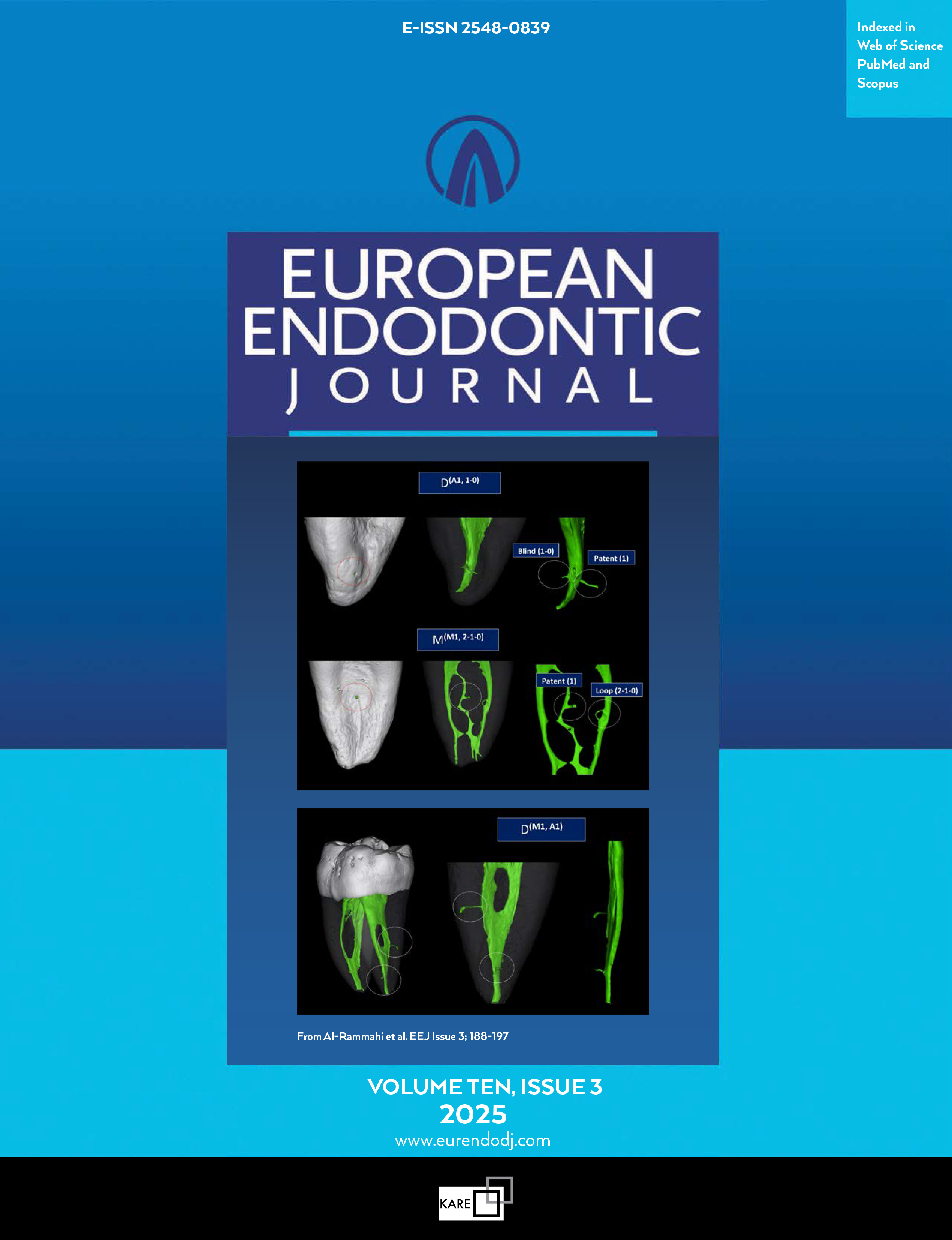Metrics
2024 IMPACT FACTOR
5 year Impact Factor
Eigenfactor Score
2024 CiteScore
Journal Citation Reports
(Clarivate 2025, JIF Rank)
Effect of Cooling of Lidocaine with Epinephrine on the Anesthetic Success of Supplementary Intraligamentary Injection after a Failed Primary Inferior Alveolar Nerve Block: A Randomized Controlled Trial
Vivek Aggarwal1, Mamta Singla2, Masoud Saatchi3, Alpa Gupta4, Mukesh Hasija1, Babita Meena11Department of Conservative Dentistry and Endodontics, Jamia Millia Islamia, Faculty of Dentistry, New Delhi, India2Department of Conservative Dentistry and Endodontics, SGT Dental College, Gurgaon, India
3Department of Endodontics, Isfahan University of Medical Sciences, Faculty of Dentistry, Isfahan, Iran
4Department of Conservative Dentistry and Endodontics, Manav Rachna Dental College, Faridabaad, India
Objective: The purpose of this prospective, randomized clinical trial was to evaluate the effect of cooling a 2% lidocaine solution with 1: 200,000 epinephrine, administered as a supplementary intraligamentary injection to overcome a failed primary inferior alveolar nerve block (IANB).
Methods: The study was preceded by a pilot study to evaluate the anesthetic efficacy of plain lidocaine solutions given as intraligamentary injections. In the subsequent randomized clinical trial, one hundred and thirty-eight patients received IANB with 2% lidocaine with 1: 80,000 epinephrine for endodontic man- agement of a mandibular molar with symptomatic irreversible pulpitis. Eighty-eight patients reported pain greater than 54 mm on a visual analog scale (Heft-Parker VAS) were categorized as unsuccessful anesthesia. These patients received either of the following intraligamentary injections: 2% lidocaine with 1: 200,000 epinephrine at room temperature; or 2% lidocaine with 1: 200,000 epinephrine at 4°C. Anes- thetic success was again evaluated after re-initiation of the endodontic treatment. The heart rates of the patients were measured using a finger pulse oximeter. The categorical success rates were statistically analyzed with the Pearson chi-square test at 5% significance levels. The heart rate measurements were analyzed using a t-test.
Results: The intraligamentary injections with anesthetic solutions at room temperature presented a suc- cess rate of 59.1%, while the injections with a solution at 4°C gave a success rate of 52.27%. There were no significant differences between the success rates of the groups (χ2=0.41, p=0.52). Regarding the heart rates, there were no differences between the two solutions at baseline (T=1.2, p=0.2) or after injections (T=0.64, p=0.52).
Conclusion: Reducing the temperature of 2% lidocaine with 1: 200,000 epinephrine to 4°C does not affect the anesthetic efficacy of supplemental intraligamentary injections, given after a failed primary IANB. (EEJ-2023-03-044)
Manuscript Language: English
(840 downloaded)


